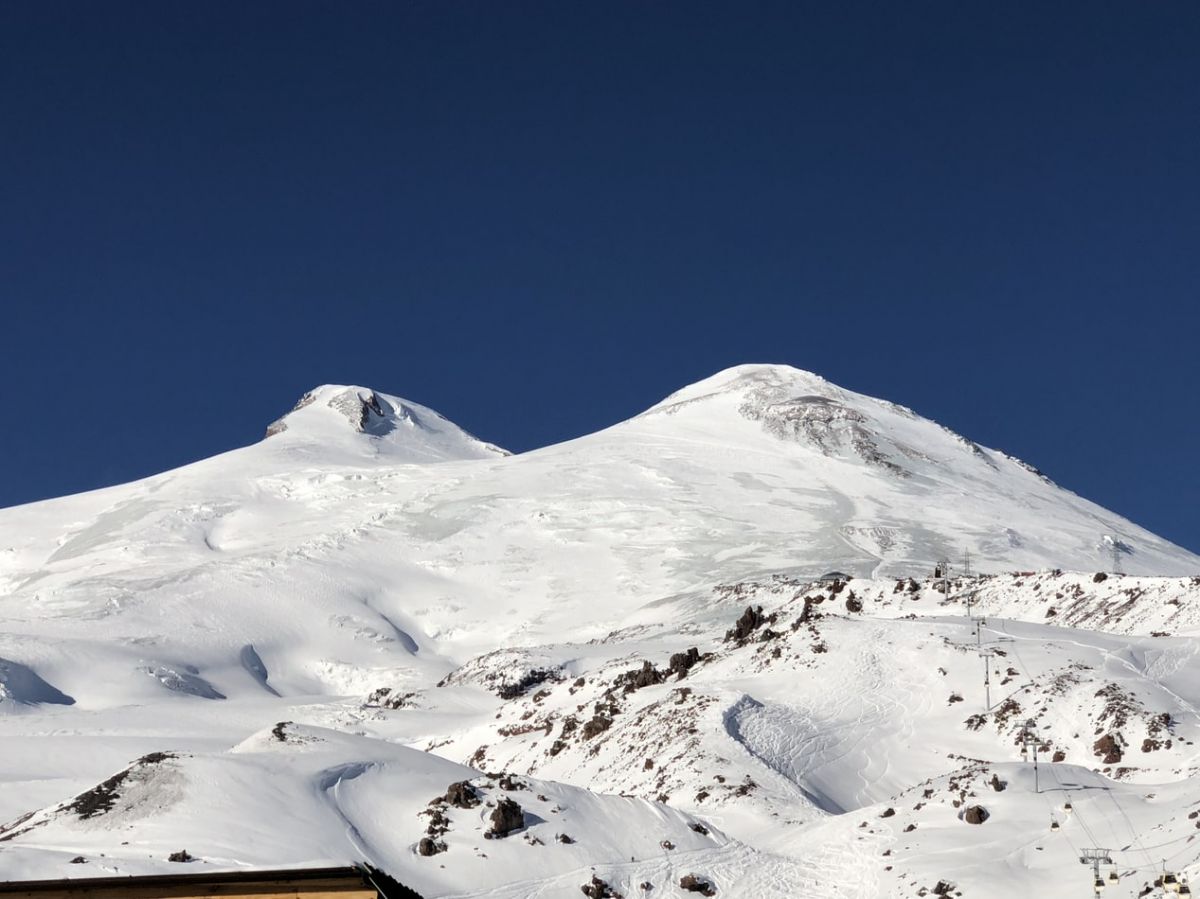Elbrus is an old stratovolcano with an almost symmetrical structure. It is considered dormant, as no eruption has been recorded for about two thousand years.
Although Elbrus is not active, volcanic gases escape from its slopes and hot springs gush out. The possibility of a potential eruption does not deter tourists who are eager to climb the peak.
There have been many ideas for conquering the summit, and some have even been realized. In addition to the classic hiking expedition, the summit has been attempted on horseback, quad bikes and even by car, the wreckage of which can still be seen on the slopes of the mountain.
It is located in southern Russia in the Republic of Kabard-Balkaria, not far from the border with Georgia.
Although some classify Elbrus as an Asian peak, which would give the title of Europe's highest peak to Mont Blanc, most scientists consider Elbrus a European peak.
Elbrus was formed about 2.5 million years ago and its period of most violent eruptions ended about 700,000 years ago. The last eruption took place around the year 50 AD.
Both are dormant volcanoes and the western peak is higher, but the height difference between the western (5642m) and the eastern (5621m) is small. The peaks are about 3 km apart.
The climb itself is not technically difficult. The problem is the harsh and changeable weather and strong winds, which can surprise less experienced climbers.
Between 15 and 30 climbers die on Elbrus every year. The main cause of tragedy is inadequate equipment for the conditions and poor organization of the expedition.
Conditions are the most stable, although at higher altitudes the weather can change in an instant.
Some of them are 400 meters thick. Glaciers on Elbrus give rise to the Baksan, Kuban and Malka rivers.
The area of the glaciers is shrinking by 1% per year, according to a recent study. If the melting rate continues, ice volume could drop 40% or more by 2050.
Its first section reaches the shelter at 3708 meters above sea level, the second section reaches 3850 meters.
The protection of the unique nature of this place was the main goal of the establishment of the park. Steppe wolves, golden jackals, red foxes, eurasian lynxes, wild boars and syrian bears can be found there.
Glaciers cover 11% of the park.
Khashirov was the guide of a scientific expedition of the Russian Imperial Army led by General Georgi Emanuel.
It was placed there by mountaineers on the orders of a German general during the war for the Caucasus in 1942.
It is said that Adolf Hitler, upon hearing of the flag's placement, flew into a rage. He considered such initiatives futile and irrelevant to the war effort.
The flags were removed in February 1943 by Soviet mountaineers.
In the 1990s, a Russian, Alexander Abramov, decided to drive a Land Rover Defender to the top of Elbrus. At first, the expedition did not pose any major difficulties for the ten-member team, but from an altitude of 3800 meters it became necessary to use the winch frequently. Despite the hardships and the unpredictable weather conditions on Elbrus, the expedition was successful. After 43 days, on September 13, 1997, the car reached the top of the mountain.
During the descent, the driver lost control of the vehicle and the expedition was forced to abandon it. Parts of the car can still be seen on the slopes of the mountain.












